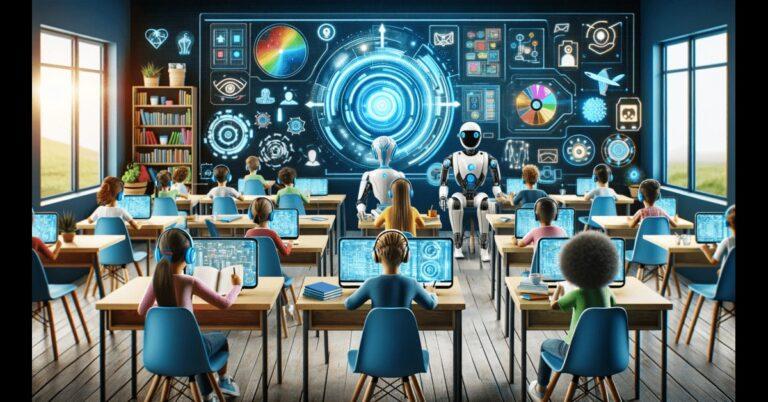Transforming Learning: Top Sustainable Technologies Shaping Educational Settings
In an era defined by innovation and global challenges, education stands at the forefront of sustainable conversion. As more schools, colleges, and universities seek eco-friendly solutions, sustainable technologies in education are pioneering a greener, smarter future. This article explores the top green technologies reshaping classrooms, outlining their benefits, real-world applications, and tips for integrating sustainability into learning environments.
- Understanding Sustainable Technologies in Education
- Top Sustainable Technologies Shaping Educational Settings
- Key Benefits of Sustainable Technology in Education
- Case Studies: sustainability Success Stories in Education
- Practical Tips for Adopting Sustainable Technologies
- Conclusion: Shaping the Future of Education Sustainably
Understanding Sustainable Technologies in Education
Sustainable technologies are tools and systems designed to reduce environmental impact while enhancing resource efficiency. In the context of education, these solutions span digital transformation, energy management, e-learning platforms, and eco-friendly infrastructure. By embracing sustainability in education,institutions can lower their carbon footprint,foster responsible citizenship,and unlock cost savings.
Definition and Focus Areas
- Digital learning tools: Replacing paper-based materials with eBooks, cloud platforms, and virtual classrooms.
- Green infrastructure: Incorporating solar panels, LED lighting, and energy-efficient HVAC systems.
- Recycled and eco-friendly materials: Using sustainable supplies for construction and classroom needs.
- Smart resource management: Leveraging IoT and AI for monitoring energy,water,and waste.
Top Sustainable Technologies Transforming Learning Environments
Today’s educational technology (edtech) sector is brimming with green innovations. Here are some of the top sustainable technologies making waves in schools and higher education:
1. Cloud-Based Learning Platforms
Cloud computing minimizes the need for on-site servers and extensive IT infrastructure, reducing both costs and energy consumption. Solutions like Google for Education and Microsoft 365 Education offer:
- Anytime, anywhere learning without physical resource limitations
- Reduced use of paper and consumables
- Optimized server usage with efficient data centers
2.Interactive Digital Whiteboards and Tablets
Replacing conventional whiteboards and paper notebooks,interactive digital whiteboards and tablets foster collaboration while cutting down on waste. Features include:
- Instant access to digital resources and lesson plans
- Easy sharing and saving of notes
- Integration with remote learning tools
3. Online Assessment and e-Grading Systems
Digital assessment platforms such as Moodle and Kahoot! drastically reduce the environmental impact of paper exams, allowing for:
- Automated grading and feedback
- Digital record keeping and analytics
- Reduced reliance on physical materials
4. Renewable Energy Systems
Schools are increasingly adopting solar panels, wind power, and green energy solutions to power classrooms sustainably. Benefits include:
- Lower electricity costs and carbon emissions
- educational opportunities around STEM and sustainability
- Government incentives for clean energy adoption
5. Energy-Efficient Building Technology
Smart HVAC systems, LED lighting, and programmable thermostats are helping educational institutions shrink their carbon footprint by:
- Optimizing energy use according to occupancy
- Reducing maintainance and utility costs
- enhancing student and staff comfort
6. E-Waste Recycling Initiatives
Many schools now participate in e-waste recycling programs to responsibly process obsolete devices, reducing landfill waste and resource consumption. These programs:
- Teach students about environmental stewardship
- convert old tech into learning opportunities
- Partner with community and industry recyclers
7. IoT and Smart Learning Environments
The Internet of Things (IoT) offers real-time insights into energy use, air quality, lighting, and security. smart sensors and automation lead to:
- More energy-efficient classrooms
- Healthier learning environments
- Intelligent resource allocation
Key Benefits of sustainable Technology in Education
Blending sustainability with innovation creates powerful outcomes for educational communities. Here are some standout advantages:
- Reduced Environmental Impact: Lower consumption of paper, water, and non-renewable resources.
- Cost Efficiency: Decreased operational and maintenance expenses over time.
- Enhanced Engagement: Interactive technology encourages student participation and creativity.
- Future-Ready Skills: Prepares students for careers in green technology, STEM, and sustainable industries.
- Positive community Impact: Builds sustainability awareness among staff, students, and families.
Case Studies: Sustainability Success Stories in Education
The global shift towards sustainable educational settings is already producing remarkable results. Let’s look at a few real-world success stories:
Green School Bali (Indonesia)
Built entirely from bamboo and designed for environmental harmony, Green School in Bali serves as a living laboratory for sustainability. The school utilizes renewable energy, composting toilets, and farm-to-table gardening to educate future changemakers.
University of California, Davis (USA)
UC Davis is a leader in sustainable campus initiatives. The university invested in solar energy, zero-waste programs, and smart building technologies, earning a Top Green College rating. Students participate directly in sustainability research and projects.
Copenhagen International School (Denmark)
This school features an innovative solar façade—with over 12,000 solar panels—providing more than half the building’s energy demand. Integrated digital learning solutions further reduce the use of physical materials.
Practical Tips for Adopting Sustainable Technologies in Educational Settings
Want to integrate more green technology in your learning environment? Here are some practical steps and best practices:
- Start with an Energy Audit: Identify energy drains and opportunities for betterment.
- Prioritize Digital Transformation: Move instructional materials and communications online to reduce paper.
- embrace Lifecycle Purchasing: Invest in durable, energy-efficient tech and plan for recycling at end-of-life.
- Encourage Stakeholder Buy-In: Involve staff, students, and the community in sustainability initiatives.
- Leverage Grants and Incentives: Explore government or private funding for green facility upgrades.
- Promote sustainability education: Integrate lessons on climate, energy, and green tech into the curriculum.
Conclusion: Shaping the Future of Education Sustainably
Sustainable technologies are swiftly transforming educational settings, providing cleaner, smarter, and more engaging ways to learn. By embracing digital platforms, renewable energy, and responsible resource management, educators and students can build a brighter future—one where learning goes hand in hand with environmental stewardship. The journey towards sustainable educational environments not only conserves our planet’s resources but also inspires the next generation of leaders and innovators.
Interested in more insights on sustainability and educational technology? Subscribe to our newsletter for updates, best practices, and inspiring success stories!

